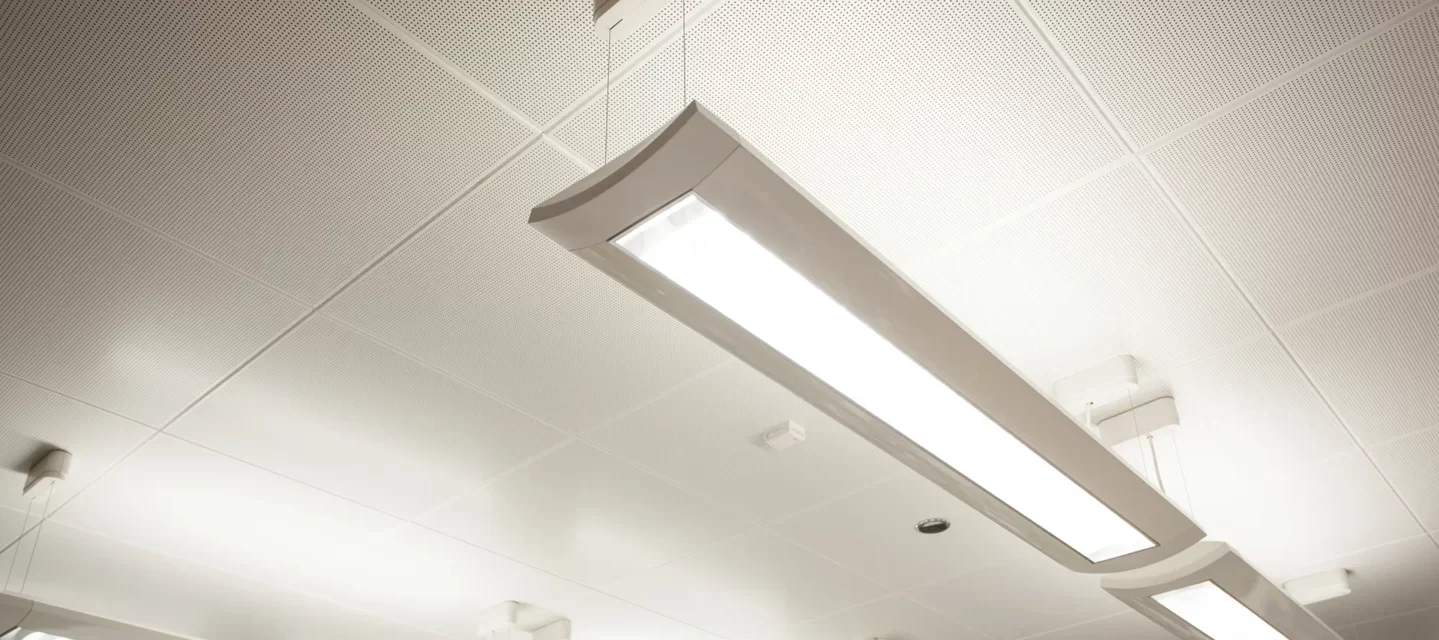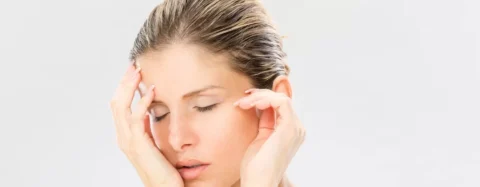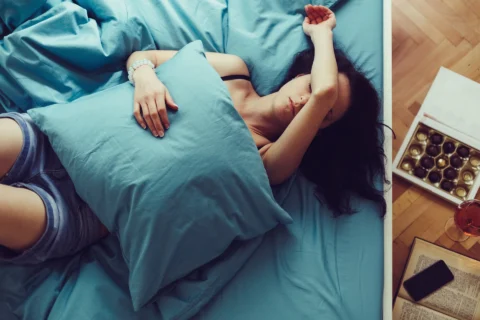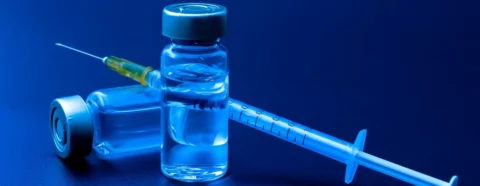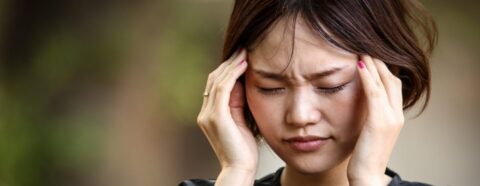Sensitivity to fluorescent lights can be frustrating for people who experience it. These visual disturbances can also trigger headache pain for many migraine sufferers. Luckily, there are a few possible treatments that patients can try to help manage their photophobia, and surprisingly to some, Botox is presented as a treatment option for them.
So are Botox injections for migraine effective for managing fluorescent lighting photophobia? Botox for migraines can reduce the symptoms of migraine headache, including sensitivity to fluorescent lights. But patients should be aware of temporary side effects that might come with this treatment such as headaches or neck stiffness, which will resolve on their own.
How Botox for Migraine Helps With Light Sensitivity
People who have photophobia or extreme sensitivity to bright lights often experience head pain, dry eyes, and spots dancing in their line of vision. These symptoms are often annoying and uncomfortable. They might even be accompanied by fatigue, nausea, and a migraine episode.
Light sensitivity can affect a patient’s quality of life because it disrupts them from doing even simple tasks, like working, driving, shopping, or other outdoor activities. Although there’s no cure for migraine photophobia, there are a few interventions that can help patients manage their condition – like Botox injection.
The Connection Between Chronic Migraine and Photophobia
Photophobia or abnormal light sensitivity isn’t a disease but a condition that occurs when the eye becomes irritated or infected. It may also be an underlying symptom of traumatic brain injury or various migraine disorders like chronic migraine, ocular migraine, retinal migraine, or menstrual migraine.
Light is also a common migraine trigger that’s usually reported in most forms of migraines and other neuro-ophthalmic disorders. Around 60% of migraine attacks are triggered by a bright light, while 80% of migraine sufferers experience extreme light sensitivity during their migraine episodes. Photophobia is also linked to tension headache, sinus headache, cluster headache, and headache disorder that affects one side of the head.
Migraine photophobia also affects people at different frequencies and intensities. For example, a migraine patient may experience sensitivity to light every day, but another patient might have a migraine episode that isn’t triggered by a bright light.
According to the American Migraine Foundation, the brightness of a light source also affects the amount of pain that the patient experiences during a migraine attack. The blue-tinted light from smartphones and computer screens is the most painful. As for fluorescent lights, the flicker or invisible pulsing they produce triggers tension headaches or migraine attacks.
How Does Botox for Migraine Work?
Botox is a neurotoxin injectable that relaxes tense muscles and blocks pain signals from the brain. When administered into specific injection sites in the head and neck, it can alleviate dry eye and migraine symptoms, including sensitivity to lights.
Researchers believe that the reason for reduced symptoms is that Botox blocks the release of calcitonin gene-related peptide (CGRP). Along with acetylcholine, excessive CGRP causes neurogenic inflammation that damages the nerves and causes pain. The sensation of photophobia and dryness also originates in the area where inflammation occurs, so blocking CGRP can provide some light sensitivity or migraine relief.
How Many Botox Units Are Needed?
The number of Botox units for migraine varies per patient, but most of them receive 31 injections containing 5 units of Botox per injection. With a total of 155 Botox units, these injections are divided into 7 different muscle areas in the head and neck: forehead, temples, upper back, back of the head, upper neck, and upper bridge of the nose.
Since this chronic migraine treatment is approved by the FDA, many insurance providers offer coverage for this procedure. As long as patients check with their insurance company and submit the necessary documents, they might only need to pay for a small part of their entire treatment cost out of their pocket.
How Often Should Patients Receive Botox?
Although Botox injection is safe and highly effective in alleviating sensitivity to fluorescent lights and other symptoms of migraine, they’re not a permanent solution to this condition. The neurotoxin injectable eventually breaks down until it’s absorbed by the body. Unfortunately, the headache pain and light sensitivity also return as the Botox injections dissolve.
To help patients experience continued photophobia and migraine relief, many Botox providers offer discounted Botox package deals and treatment plans. Patients receive Botox injections every 3 to 4 months or as soon as their symptoms return.
How Effective is Botox for Migraine and Photophobia?
In a study by the researchers from the University of Miami Miller School of Medicine, they found out that patients who had Botox injections for migraine relief also experienced secondary benefits: the reduction of migraine-associated symptoms like dry eye and photophobia.
The study had 90 participants who all have chronic migraine but didn’t experience relief after using 2 different migraine relief drugs. Some of them also had contraindications to the medications, so their options for managing their chronic migraine are extremely limited.
These patients were asked to remember the ocular symptoms they experienced before and after their Botox injections for migraine and rate the severity of these symptoms from 0 to 10. After gathering all the data, the researchers found that the intensity of migraine pain, eye dryness, and photophobia were all correlated – 72.5% of them reported reduced light sensitivity and 29.3% of them had fewer dryness symptoms.
Are You a Good Candidate for Botox for Migraines?
Botox for migraine is a safe treatment for patients with good overall health, as long as it’s performed by an experienced provider. But still, there are some contraindications might affect the treatment or recovery, so skip Botox treatments for migraine if you:
- Have a history of botulism or allergic reaction to Botox
- Have signs of infection or cold sores near the injection sites
- Are diagnosed with a health condition that causes muscle weakness, like myasthenia gravis or amyotrophic lateral sclerosis (ALS)
- Are pregnant or breastfeeding
- Aren’t willing to undergo multiple treatment sessions
Additionally, Botox for migraines and photophobia only works for patients who are suffering from chronic migraine conditions. These patients usually experience an average of 15 headache days every month. If the migraine attacks aren’t chronic, then Botox might not be of much help for the patient.
Is It Possible to Manage Light Sensitivity With Home Remedies Alone?
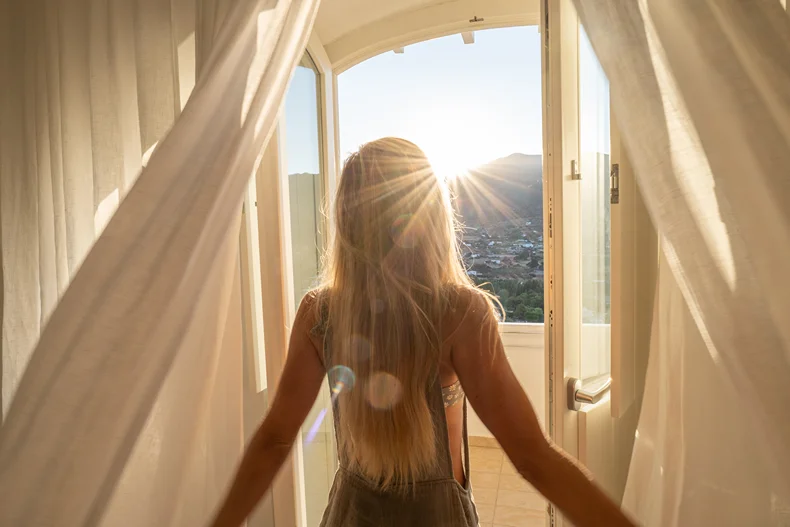
Modern medicine has developed different medications and treatments to help patients relieve their sensitivity to light. But there are still some patients who would rather skip painkillers, treatments, and all the risks that come with it. Lucky for them, there are a few home remedies that can help address light sensitivity up to some extent.
- Use Special Migraine Glasses
Tinted glasses are non-invasive, highly effective, and portable so many patients use them to reduce photophobia symptoms. They work by blocking the spectrum of harmful light that usually triggers migraine and light sensitivity symptoms.
These migraine glasses still let the rest of the light through so patients can use them while doing daily activities under fluorescent and natural light. Unlike medications and medical procedures, using special tinted glasses doesn’t have side effects that patients need to worry about. Rose-colored glasses work better than other colors, so make sure to buy them if you’re planning to use migraine glasses.
- Change All Fluorescent Lights at Home
Fluorescent lights are especially bad for people with light sensitivity because of the invisible flickers they emit. The intensity of its blue light spectrum also makes migraine attacks a lot more painful than normal.
Note that it’s extremely difficult for patients to avoid fluorescent lighting altogether since they’re found everywhere – like the lights at home, malls, and offices. Some of the ways to lessen your exposure to fluorescent lights are to switch to LED lights, use filters and diffusers, and put anti-glare flares on computer monitors.
- Rely on More Natural Light
Bringing natural light into your home is a great way to reduce your exposure to fluorescent and other artificial light sources. When in the office, try working in areas near a window to lessen the need for electric lights.
You can also use blinds, but they may still trigger light sensitivity because of scattered and high-contrast patterns. To prevent this, it’s better to open the blinds all the way instead of just partially.
- Slowly Increase Your Exposure to Light
Although it might seem counterproductive at first, slowly increasing the patient’s exposure to light helps them gradually overcome their photophobia. A certain amount of light is needed to prevent the eyes from getting used to the darkness and making the condition worse. This is also the reason why patients are advised against using tinted glasses indoors.
Check with the patient if they can handle light at a dim level. Increase the light’s brightness little by little over time until they reach their limit. This method is trial and error, so they might not respond favorably each time. But with the help of migraine glasses, patients may find themselves getting used to lighting brighter than what they’re used to.
- Avoid Eye Strain
Anyone may develop computer vision syndrome (CVS) even if they’re not light sensitive. People who spend several hours a day looking at computers, smartphones, and digital screens may experience blurry vision, dry eye, headaches, and neck and shoulder pain.
The best way to avoid CVS and light sensitivity symptoms is to take frequent breaks from the screens. Try walking around the office or grabbing a snack to rest the eyes from harsh lights. Another good exercise is the 20-20-20 rule: look at something 20 feet away for 20 seconds every 20 minutes.
- Protect the Eyes from the Sun
Aside from artificial lights, harsh sunlight is also one of the primary triggers of photophobia. Even a few minutes of sun exposure without eye protection sets off extreme light sensitivity or a migraine episode.
If you feel dizzy or experience pain in your head when staying under the sun, make sure to cover your eyes well next time. Wear a wide-brimmed hat to protect the eyes or use sunglasses to filter the UV rays from the sunlight.
Although these home remedies are effective in preventing and managing light sensitivity, they don’t exactly address the cause of the condition. Certain treatments like Botox and prescription medications may provide lasting relief from photophobia symptoms, so it’s better to consult a doctor about the best type of treatment for your case.
Botox for Migraine vs. Other Photophobia Treatments
Botox for migraine is an effective way to reduce photophobia, but it’s not exactly designed for this condition. There are also situations where patients aren’t qualified for Botox because of the health conditions they have or medications they take that might affect the procedure or recovery.
Here are other potential photophobia treatments and how they compare to Botox injections for migraine:
- Anti-CGRP Medications – CGRP inhibitors are injectable medications used for preventing migraine attacks. They reduce the production of CGRP to alleviate migraine pain and other symptoms like light sensitivity. But note that this medication isn’t recommended for patients with depression and anxiety so patients are prescribed Botox treatments instead.
- Pilocarpine – Like Botox, pilocarpine isn’t specifically made for photophobia. It has great potential in decreasing light sensitivity, but it’s not a long-term solution for the condition. Photophobia symptoms usually return about 6 months after taking Pilocarpine.
- Triptans – These oral medications have been used for decades to help patients relieve acute migraine attacks after the onset. Taking this prescription medication might offer relief to light sensitivity, but the results don’t last as long as Botox injections for migraine.
Botox Treatments by Ethos Spa, the Best Provider in New Jersey
Botox is a versatile injectable treatment that works for several medical and cosmetic concerns. If you’re searching for a trusted and experienced Botox injector near you, then look no further than Ethos Spa – the best provider of Botox cosmetic injections in New Jersey.
With world-class facilities and expert needling techniques, our highly-trained injectors can help you achieve your desired aesthetic results. Call us today to know more about our Botox treatments and other med spa services.

